Abstract
Gravitropism and nutation in the stems of dark-grown, seedling peas (Pisum sativum L. cv. Alaska) were recorded on time-lapse photographs made with photomorphogenetically inactive light. Although gravitropism and nutation have been connected by several different theories in the past, our experiments indicate that the two processes are in fact dissociable. The evidence is as follows: (a) Nutational patterns are asymmetric. There is much greater amplitude of oscillation in the plane parallel (∥) to the plane of the apical hook than in the plane perpendicular (⊥), yet the average gravitropic response is equal in these two planes. (b) Brief red light irradiation given 16 to 24 hours before observation greatly increases the amplitude of nutation in the ∥-plane, but has no influence on the kinetics of gravitropic response. (c) An inhibitor of auxin transport, α-naphthylphthalamic acid, strongly inhibits nutation at 5 micromolar but affects gravitropism only at higher concentrations. (d) Nutation is also strongly inhibited by removal of the apical bud, but gravitropism is unaffected. (e) The period of nutation does not exhibit a constant relationship to the response time of gravitropism. The above evidence is inconsistent with theories that gravitropism is an asymmetrically modified nutation or, alternatively, that nutational oscillations result in a simple fashion from gravitropic overshoots. The evidence is consistent with, although not proof of, autonomous factors such as an endogenous rhythm of growth as the cause of nutation in pea stems. However, gravity and nutation do interact. Nutation in a population of seedlings can be synchronized and brought into phase by a single gravitropic induction. Furthermore, the response time and initial rate of gravitropic curvature depend to some extent on the phase of nutational curvature at which gravitropic induction is begun.
Full text
PDF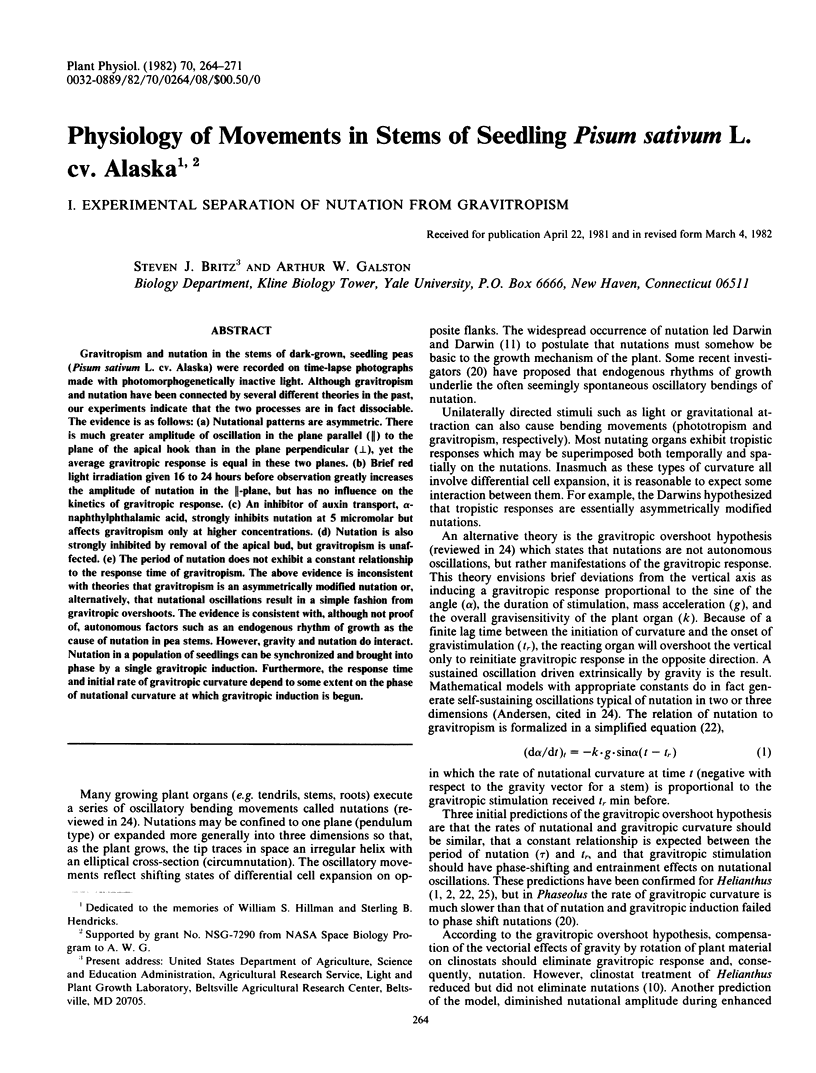
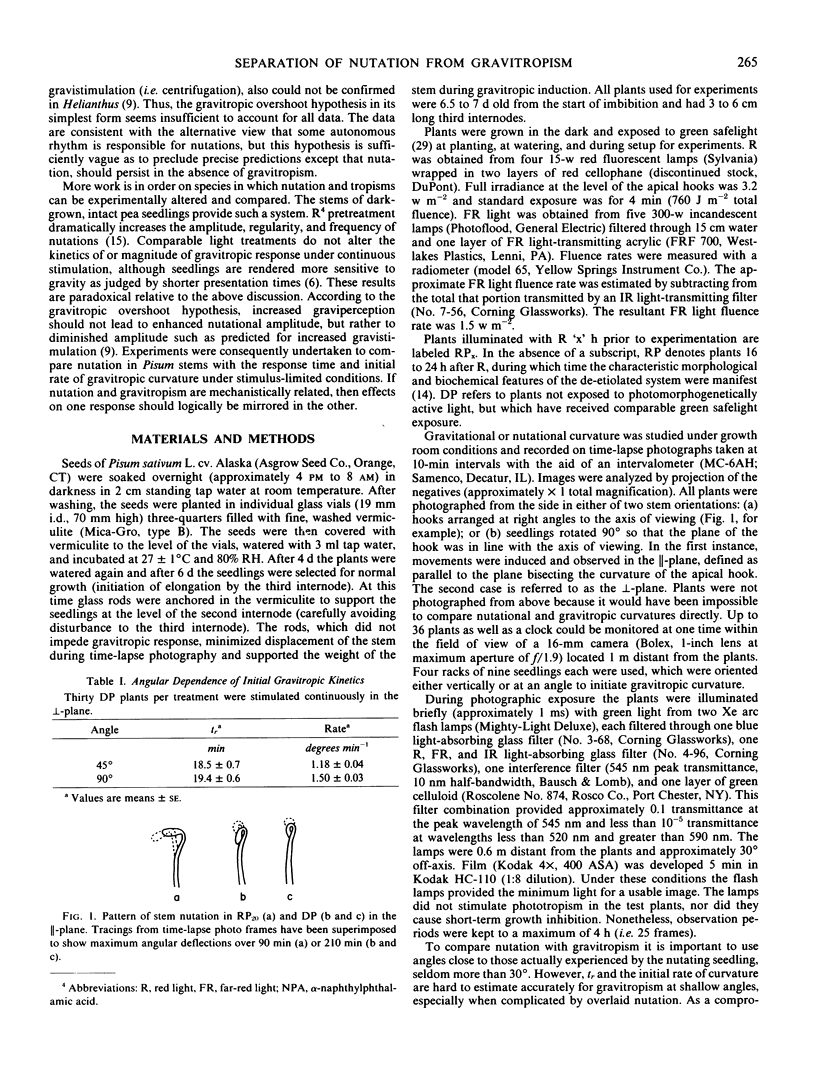

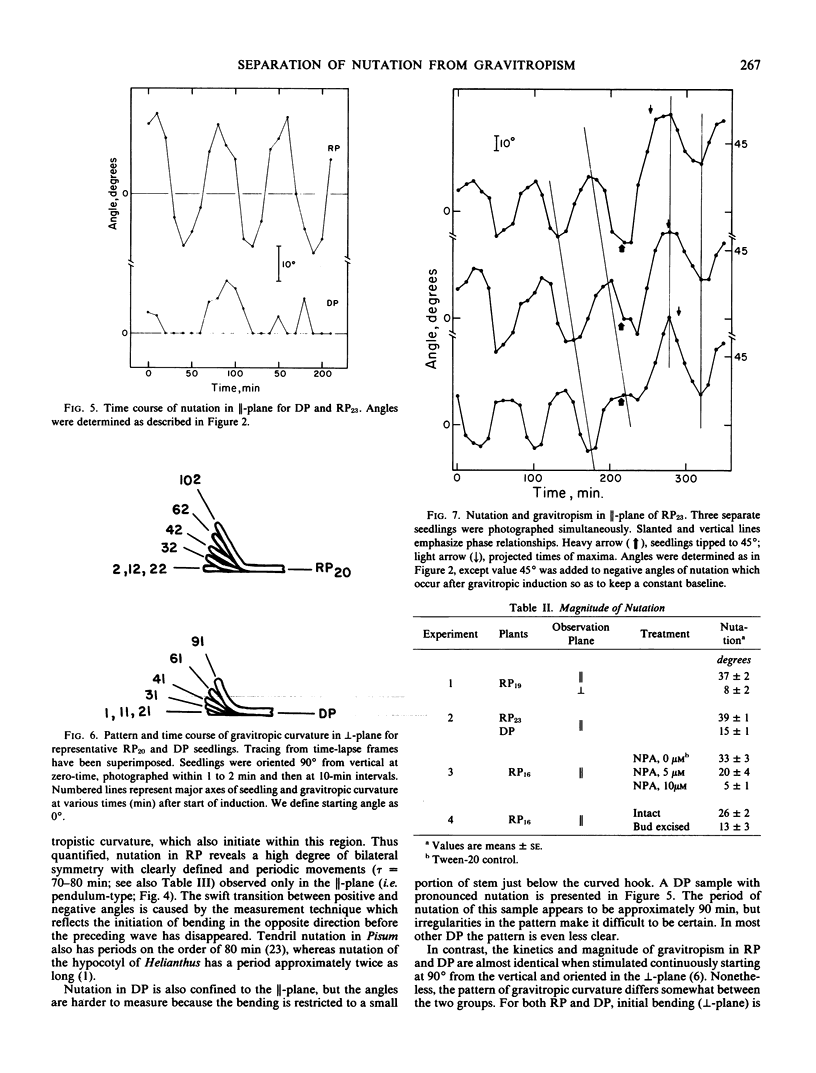
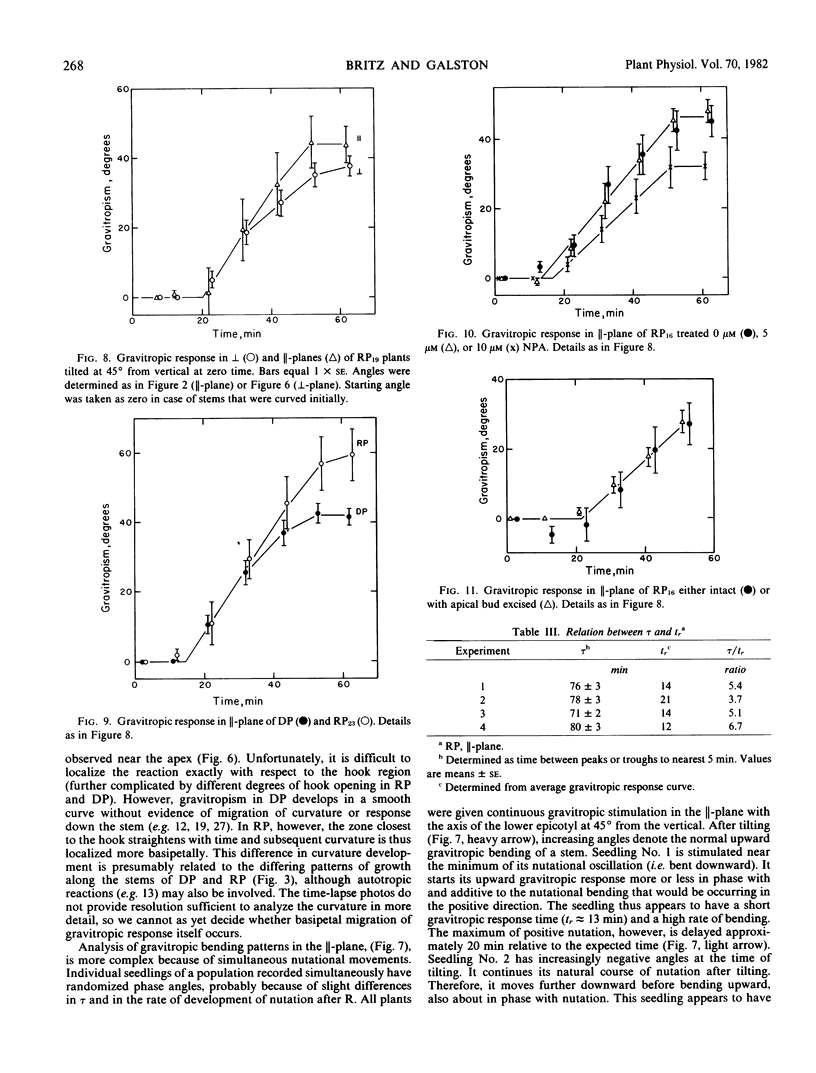
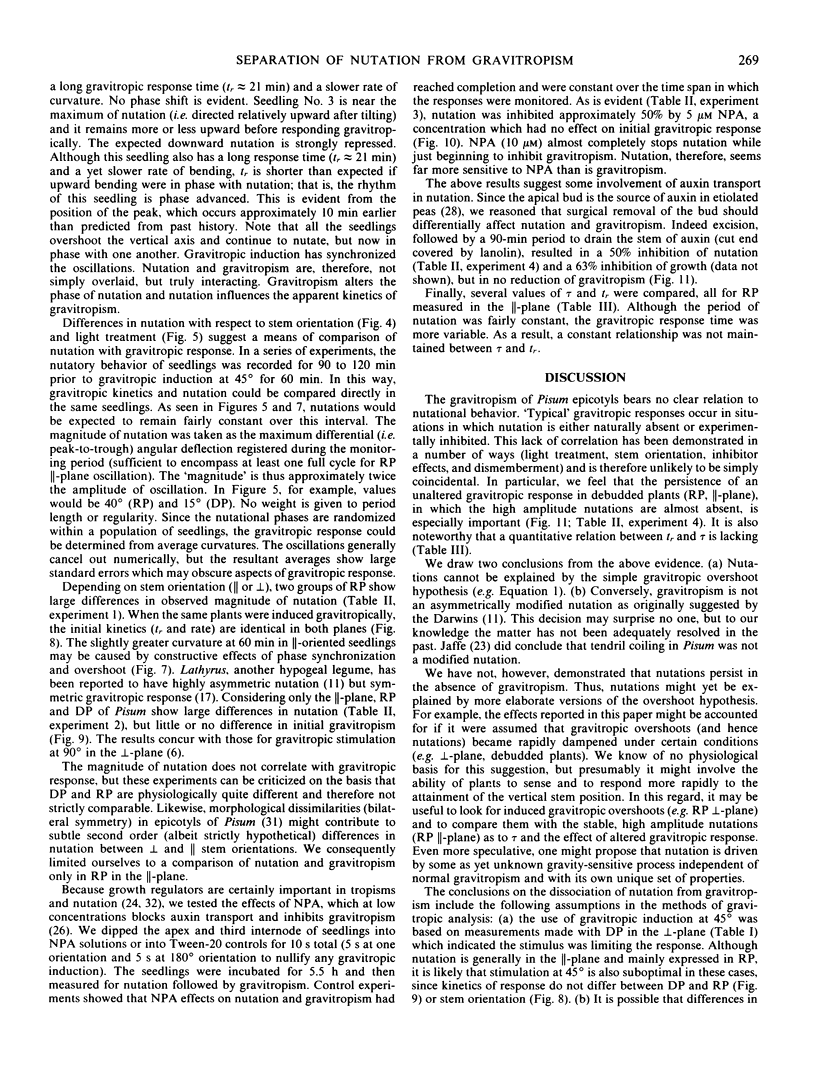


Selected References
These references are in PubMed. This may not be the complete list of references from this article.
- Brown A. H., Chapman D. K. Effects of increased gravity force on nutations of sunflower hypocotyls. Plant Physiol. 1977 Apr;59(4):636–640. doi: 10.1104/pp.59.4.636. [DOI] [PMC free article] [PubMed] [Google Scholar]
- Hinchman R. R., Gordon S. A. Amyloplast Size and Number in Gravity-compensated Oat Seedlings. Plant Physiol. 1974 Mar;53(3):398–401. doi: 10.1104/pp.53.3.398. [DOI] [PMC free article] [PubMed] [Google Scholar]
- Katekar G. F., Geissler A. E. Auxin Transport Inhibitors: IV. EVIDENCE OF A COMMON MODE OF ACTION FOR A PROPOSED CLASS OF AUXIN TRANSPORT INHIBITORS: THE PHYTOTROPINS. Plant Physiol. 1980 Dec;66(6):1190–1195. doi: 10.1104/pp.66.6.1190. [DOI] [PMC free article] [PubMed] [Google Scholar]


